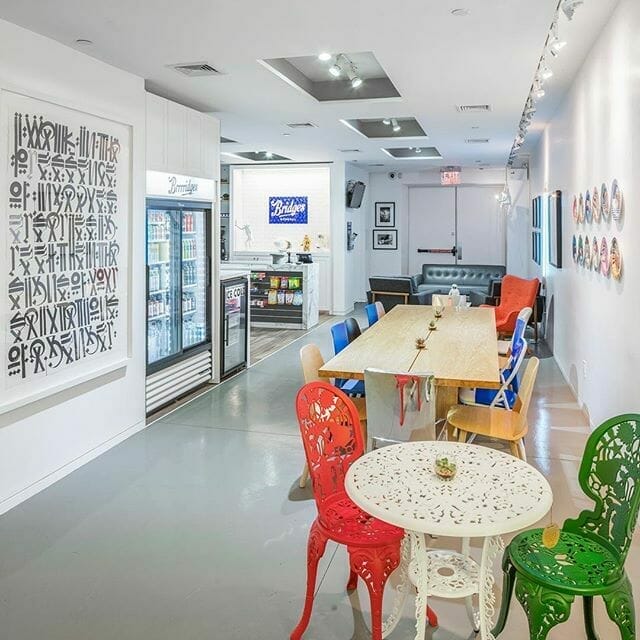Two news releases wafted past me yesterday that caused me to dig deeper than the words written on the page. This sometimes happens out of necessity – a company has to release news about a topic but can’t go into detail yet, or has bad news they don’t particularly want to run a highlighter over.
But sometimes it’s because the news doesn’t appear to be factual. And that shit enrages me.
What’s up, Instadose.
https://equity.guru/2018/12/29/instadose-scam-brazen-becomes-unintentional-comedy/
The companies in question that made me set aside some research time yesterday were The Green Organic Dutchman (TGOD.T) and Wildflower (SUN.C).
Both companies have their fans and their critics. Both have been tagged with the question, ‘are you guys actually doing what you said you’d do?’
And, at least yesterday, the two of them couldn’t have been taking more distinct approaches to their news.
THE GREEN ORGANIC DUTCHMAN SIGNS A COMMERCIAL SUBLICENSE WITH ENWAVE AND TILRAY TO DRY CANNABIS IN CANADA
The Green Organic Dutchman Holdings Ltd. has signed a royalty-bearing commercial sublicence with EnWave Corp. and Tilray Inc.
EnWave has developed Radiant Energy Vacuum (REV) — an innovative, proprietary method for the precise dehydration of organic materials. EnWave has further developed patent-pending methods for uniformly drying and decontaminating cannabis through the use of REV technology, shortening the time from harvest to marketable cannabis products.[…] The agreement grants Green Organic Dutchman the right to use EnWave’s proprietary Radiant Energy Vacuum dehydration technology to dry organic cannabis in its Canadian operations.
Okay. It’s news, but not massive news to the layman. And Tilray (TLRY.NASDAQ), by jumping on REV IP early and getting Canadian rights to sub-license it in Canada, gets as much lift as TGOD does out of this – if you’re looking at the surface level.
But what this news release says to me is something different from what it might say to most. If there’s been a knock on TGOD from critics (beyond it’s long impending paper releases that dragged back the share price as expected and are now mostly over), it’s the old ‘they don’t grow anything’ canard.
There’s little argument about it; they don’t grow much.
- Is optimizing commercial cultivation at its existing facility in Hamilton, developing five new strains for placement into the medical and recreational markets to ensure it’s in position to provide patients and consumers with consistent, reliable, premium product. The most recent commercial crop harvested will be allocated to TGOD’s select “Grower’s Circle” in January 2019. The Growers Circle will provide early investors and patients who rely on medical cannabis access to the Company’s first commercial crop.
That’s a tiny grow. And it’s early in its development.
And I couldn’t give less of a shit.
Back in 2015, a CEO of a small weedco on the CSE (no names, but it rhymes with Schmodis Schmarma) that had gone to the US to run ‘leaseback’ operations rather than wait for a Canadian license, said to me, “I’m happy we haven’t got our Canadian approval, because we’d be forced to lose money for the next several years just to maintain our license. The system here won’t be profitable for years.”
That’s still true. And it doesn’t appear to matter.
Canopy Growth (WEED.T) earns far less in revenue than a company its size should, and makes no profit, but nobody cares because, growth. Or something.
Canopy Growth revealed a $330-million net loss on revenue of $23-million in the quarter ended Sept. 30, an 11-per-cent drop in revenue from the previous quarter.
Canopy currently sits on a market cap of nearly $13 billion.
Meanwhile, Invictus (GENE.V) paid a dividend once, on the back of an asset sale, and the world shrugged. I’d hazard a guess the majority of cannabis investors couldn’t define what a dividend was, if asked. With two licenses in hand, they’re only worth just over $100m.
GTEC Holdings (GTEC.V), which is in the midst of negotiating a merger with Invictus, has a load of grow facilities at various stages of licensing and construction, with some licensed and growing and others on the way, with an expected 13,000 kilos of production in 2019, as well as retail operations on the way – and it has a lowly $46m market cap, even after a nigh 50% jump in share price in recent weeks.
When those two companies join forces you’ve got licenses up and down, facilities cranking, retail outlets – and just a $146m market cap? That’s half Canopy’s loss.
Meanwhile, Emerald Health (EMH.V) sits on a whopping $427m market cap, which was as high as a billion dollars a year ago, and sells suspiciously small and consistent amounts of product every single quarter, as if they actually don’t grow anything at all but purchase and resell product from other companies whenever someone accidentally stumbles across their website and buys something.
- Revenue Sept 30, 2018: $321k
- Revenue June 30, 2018: $284k
- Revenue March 31, 2018: $373k
- Revenue Dec 31, 2017: $279k
Worth noting:
- Net loss Sept 30, 2018: $6.4m
- Net loss June 30, 2018: $5.6m
- Net loss March 31, 2018: $5.0m
- Net loss Dec 31, 2017: $$4.0m
And yet, $427m in value, readers.
Which brings me back to TGOD.
Nope, they don’t grow shit. Yep, they’re building out a million square feet, so they will at some point stock that up with plants and go hog wild, but folks fairly point to their lack of production and say, ‘what gives?’ expecting that every LP will be hell bent on growing flower, right now, and selling it right now.
For the counterpoint to this, I point to Supreme Cannabis (FIRE.V), which steadfastly refused to buckle to the markets by shooting as much product as they could out the door, as soon as they could hatch a seed, for quite some time.
Instead, Supreme, upon getting its sales license (and for months before), grew for themselves, banking it in the vault, focusing on streamlining and perfecting systems, and capitalizing on shortages among competitors by selling their product to those competitors – at a premium price or not at all.
Supreme also has a large war chest of cash that they’ve not splashed around on grabbing assets of questionable quality in the knowledge the market would reward them with big short term share jumps at a long term cost.
Sup, Namaste.
Instead, it’s been picky. Deliberate. Patient. And while the share price has slumped in that time, the cost of any acquisitions they might like to make has gone down again and again in 2018.
Today, they’re going for a song. see Emblem Cannabis (EMC.V) tapping out and offering up their precious flower for Aleafia (ALEF.C) for barely a premium.
Supreme investors have been a little uneasy at that strategy, and the company share price has buckled a few times over the last few years as the company builds internally something that they think will endure and – eventually – be richly rewarded.
But the rewards are starting to appear now. If you’re buying plants to start your own weed grow, you can get them from several places in Canada on the cheap, but if you want Supreme plants, you’ll pay out the nose because they’re known as high quality and beginning to pick up a following.
Again, that took some time. Supreme’s products are only now on retail shelves, and were absent on day one of legalization.
The reason? The company didn’t want their product to sit in a government warehouse for a month leading up to legalization, so instead held off until they could be sure their strains would arrive on a given day, and be sent to customers the following day. The response to their hand-processed, high grade, fresh product has been almost uniformly high-five time as a result.
https://equity.guru/2018/11/13/supreme-cannabis-fire-v-not-misnomer-first-hand-tour-quality-city/
My point here being, there’s traditionally been a lot more value in playing the weed market as an LP than there has been in supplying the weed market as an LP, and now that the pendulum on that is swinging to ‘what’s next’ – with high quality products, hemp, CBDs and an upcoming edibles market front and center – actually growing weed for anything but internal supply chain use (that is, growing it so you can process it and turn it into value-added products, rather than sell flower to stoners) almost seems like old thinking.
So why is yesterday’s TGOD news important to me?
- Because it shows TGOD is actively prepping its production line – you don’t order heavy machinery unless you’ve need to use it
- Because it doesn’t require a big cash outlay to do it – Enwave prefers a royalty based on sales using its tech
- Because it validates what TGOD has been hinting at for months, that it doesn’t give a shit about selling the government $3 flower for $4, and that it wants to use the flower that will come out of its facilities to make products that are already in high demand, and bring a heavy premium – oils, CBDs, and beverages down the line
The plan to gear up for a market that doesn’t exist yet has risk attached, no question. Maybe Canada never quite gets around to making edibles a thing, or does as it has with flower thus far, and leaves it so damn tangled in red tape that it becomes hard to build a market, let alone market share.
But I see many more doughbucks in the world of value added CBD products that are sold in supermarkets to grandma than I do in dispensary products sold to Call of Duty players.
And TGOD is geared 100% in that direction. Recent deals in Europe to nail down hemp supply and tech are evidence of that, and the recent floating of California-based Plus Products (PLUS.C) brings them first access to the #1 rated edible brand in that state.
Yep, the stock is low and yep, a lot of shareholders that bought on the way down from $9 are under water. But also, yep, a lot of that paper that folks had concern about is now free trading and a lot of early investors that got in for $1.65 have made their money and taken up their warrants and moved on, leaving a value proposition for new investors.
TGOD is stacked with cash – they’ve raised over $300m in financings – so if you’re one of those people jumping up and down because they’re not selling $2m of weed at a $20m loss, my suggestion is to have a think about why you’d want the company to engage in such bad business.
Does that potential $2m – or even $10m – matter a speck on a $700m market cap? Will the market reward Aphria-like revenues with vast Aphria-like valuations?
It hasn’t historically. If you put revenues and losses of Canadian LPs on a chart, and overlay that with market caps, you’ll get something like a Jackson Pollock out of it. It will make no sense at all. None.
Revenues just don’t count. Not to this sector. Not yet.
But that won’t always be the way. Now is the time to build, while a company still can and not be pounded out for taking a quarterly loss. Because, in six months, you won’t be able to get away with that shit.
For mine, the TGOD news of yesterday was some of the most important news they’ve released, because it shows me they’re getting ready to turn the gears, and that they’re literally putting those gears down right now.
But, if I’m honest, the inability to pyut that news in such context is baffling to me. TGOD isn’t known as being a wallflower, but they underplayed this news like crazy.
There are wallflowers, and then there’s Wildflower (SUN.C).
Man, these guys.
I’ll give credit to Wildflower for one thing – they always keep me on my toes. Every time I think I have them nailed in a lie, they wriggle a little, parse their words, catch a wave, throw their hands up in a ‘what are ya gonna do’ and chortle off down the road towards their next deal and share price bump.
CEO William MacLean is the closest thing to a cannabis raconteur that I know of. As you’ll hear in this livestream we did with him a while back, I have to begrudgingly respect the man’s steel balls, and his ability to bounce back from anything. If he’s smiling, he’s pitching, and he’s never not smiling.
To be sure, Wildflower runs a small loss, like everyone else. But they also have sales with their CBD products across several US states – $1m in the last quarter – and keep their consulting and management fees respectfully low.
And, one thing I’ve always said they lead the way on – their design is A1. The products look beautiful.
This is what CBD will look like when grandma is partaking. A minimum of cannabis association, a maximum of ‘I can leave this on the coffee table and not be the talk of the assisted living facility.’
But Wildflower does like to fuck around on the edges of acceptability when it comes to transparency.
WILDFLOWER OPENS FIRST NEW YORK CBD RETAIL STORE
Wildflower Brands Inc. has opened its first Wildflower by Bridges General store in Lower Manhattan at 770 Broadway.
This retail location is in a high-occupancy office tower housing Facebook’s NYC office, as well as other established digital media companies including: Huffington Post, Yahoo, AOL and Tumblr. Wildflower will be serving some of the most innovative minds in technology, media and retail from this location.
Okay, a few things here.
First, what has actually occurred here is, RetailWorx has a concept called Bridges General, which brings a bunch of hipster-loved, high end, organic, Whole Foods-on-steroids products together, and places them in high population areas in a high end convenience store format. This is good for those brands incorporated in the stores because to have single brand stores would be cost prohibitive.
It’s like when you go to The Bay and walk past the Kiehl’s counter and the Levi’s section and the dozens of other branded ‘booths’, that a company will list as a location on its website, without spending $40k per month on renting their own digs on High Street.
If you need a place to get a bison bacon cranberry protein bar on the quick before the next marketing department meeting, and you happen to be in a building with a Bridges General in the lobby, they will oblige.
Which isn’t a bad deal for Wildflower. It actually makes a lot more sense to be an impulse buy than a destination.
But the news release makes it sounds like Wildflower will have a huge sign on Broadway and that a bunch of high tech companies will be all ‘who is this sassy startup downstairs and how can we snap them up?’ when, in actual fact, those tech employees will spend more time in the 8th Street subway station than they will in their building lobby.
Probably more interesting would be that there are three colleges nearby; NYU is a few blocks away, the Tisch School of the Arts is right around the corner, the St Johns Manhattan campus is a block the other way, and the Hebrew Union College is to the south.
Such location! Much college! So student!
The problem with that is, none of those students will see Wildflower’s store unless they’re going to AOL for a job interview.
Here’s what Bridges General stores look like, as best as I can tell you from what I’ve learned in an hour looking online:
“These stores look amazing!” said nobody ever, if going by the company’s Instagram offerings, because Bridges General doesn’t actually show what the inside of their stores look like beyond these two images. Not on their website, not on social media.
Now, that’s not to say there isn’t a Wildflower focused Bridges General store out there in the world with a pretty sign and lots of their products. There undoubtedly is.
But Wildflower won’t show it to you, presumably because it’s a kiosk in the lobby of 770 Broadway, and not this:
To be clear, MedMen (MMEN.C) loses a ton of money on their Manhattan store. Not as much as they lose on executive bonuses, but still. A smaller location in a central part of New York that is cross-branded to lower costs isn’t a terrible plan for a little playa like Wildflower.
It’s just not what the news releases hinted at.
WILDFLOWER OPENS FIRST NEW YORK CBD RETAIL STORE
Why this is important is, when that store shows modest success, it’s going to likely be a downward drag on SUN stock, rather than a nice step towards a bigger business down the road, because expectation will be higher than reality – as has always been the way with every piece of news Wildflower has put out ever.
Another reason this release vexed me is this:
This retail location is in a high-occupancy office tower housing Facebook’s NYC office, as well as other established digital media companies including: Huffington Post, Yahoo, AOL and Tumblr. Wildflower will be serving some of the most innovative minds in technology, media and retail from this location.
Are we really suggesting that interns cranking out blog articles at AOL are going to somehow propel this thing they bought in the lobby of their building to social media superstardom?
‘The people who buy our product will have jobs, some of them at companies you know!’ = not a selling point.
There were many other news releases out over the last few days that I could apply this same level of research and judgment on, so perhaps it’s unfair to shine a flashlight this hard on stuff that the market hasn’t really reacted to either way, but I think it’s important, in a down market, at a time when uncertainty has rocked even the bigger players (sup, Aphria), that companies follow this easy checklist when putting out information.
- Is this important? If yes, have I properly expressed why?
- How does it fit into our overall strategy and business plan?
- Does this deliver on a milestone we have promised earlier?
- How does this make us unique?
- Am I overhyping here? If so, don’t.
- This is the important one – what’s coming next?
In short, more information, bois. Clear, honest, detailed information.
I’m not saying every news release should be a 42 page business plan. But in the absence of detail (like what you’re doing with a REV system or a picture of what your ‘store’ looks like), fuckers like me will fill in the details. And we aren’t always be so generous in giving the benefit of the doubt.
— Chris Parry
FULL DISCLOSURE: TGOD, GENE, GTEC, FIRE are all Equity.Guru marketing clients and the author owns stock in all of them because they’re rad.







